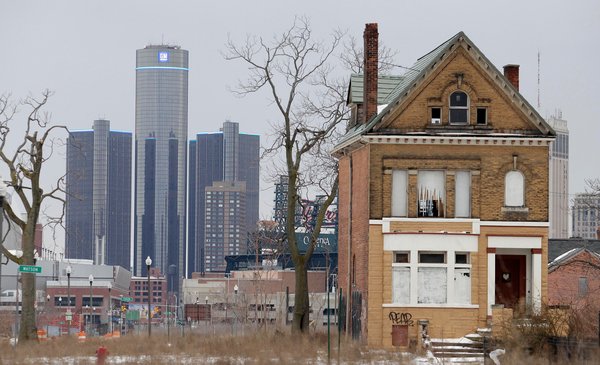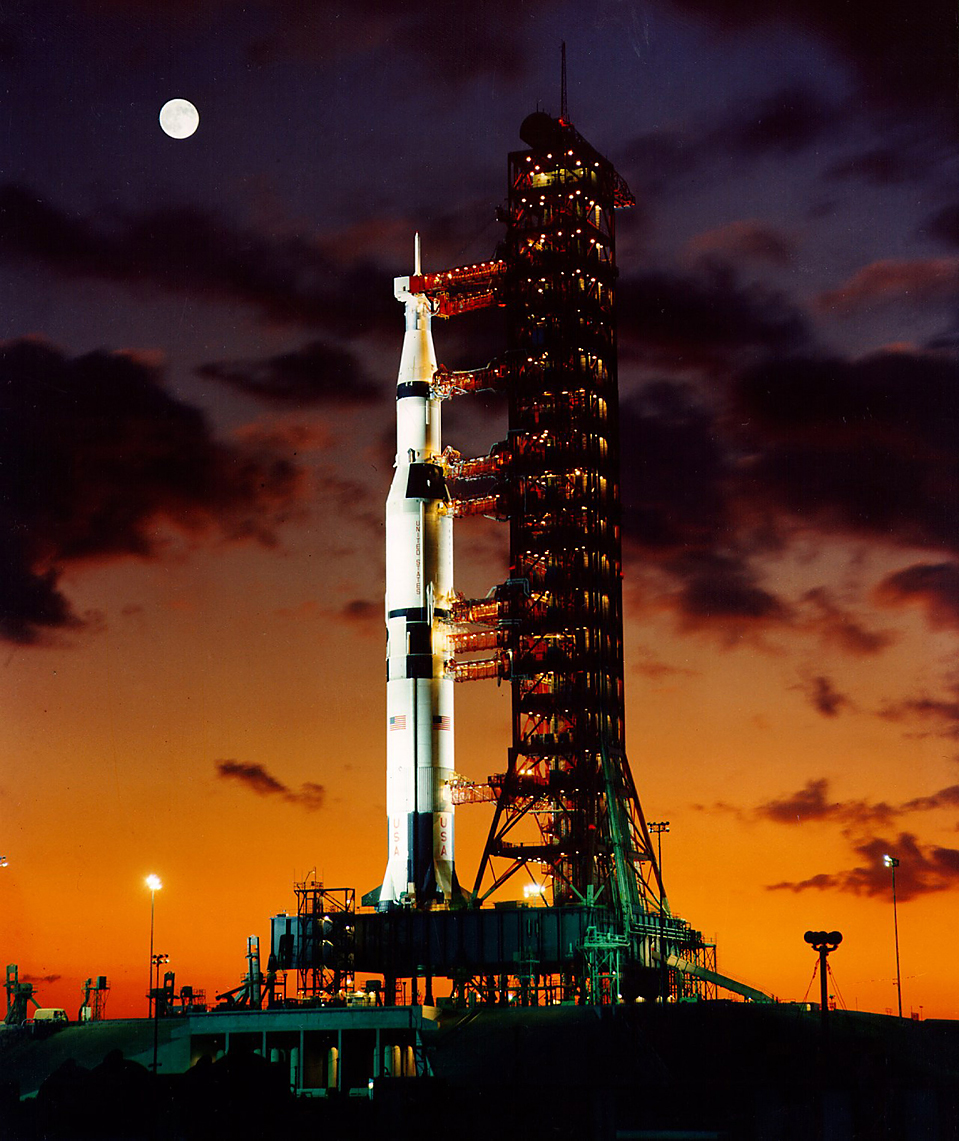Stuff Black People Don’t Like
April 19, 2014
Detroit is 83 percent black.
Since 1974, blacks have been in control of the executive branch of government in the city, working to rewrite rules on contracting to ensure connected black-owned firms get preferential treatment (racial cronyism); with white flight from a city that was more than 80 percent white in 1950, Detroit has been regressed to the black mean.
The city in 2014 has been remade in a black image, the collective achievement of not liberals, progressives, Democrats, or unions, but black individuals.

Dreams far different than the one Martin Luther King talked about in 1963 built Detroit; the implementation of his dream tore the civilization whites built in Detroit apart. With more than 80,000 abandoned buildings a reminder a much different people built the city than currently occupy it, with the housing stock that once sheltered white families rotting and crumbling under black rule.
Never forget America abandoned our mission to investigate the heavens, instead embarking on a costly adventure to perpetually engage in Waiting for Superman to close the racial gap in learning/achievement.
He’s never coming.
But Detroit is too black to fail. Though the failure of the city under black rule is a critical blow to the crucial mission of uplifting blacks, it must continue unabated. [Detroit, feds talk up to $100M for blight funding, Detroit News, 4-16-14]:
The White House and city of Detroit are in talks in recent days to free up to $100 million in federal blight funding that could indirectly soften the blow of pension fund cuts and other financial issues for the Motor City.
No deal has been reached and the Obama administration has been eager to emphasize it will not provide a bailout for Detroit. But as mediators, the city and its pension funds have worked to reach a deal to help speed the city’s exit from its record-setting Chapter 9 bankruptcy, the federal government’s additional blight funding could allow the city’s emergency manager, Kevyn Orr, to redirect some of his planned blight spending toward pensions and other priorities.
The Obama administration would potentially allow the state of Michigan to redirect “Hardest Hit” funds that are earmarked to prevent foreclosure to blight removal — as it did in August — but officials emphasize that none of the funds would be spent directly to fund retiree pensions or be used by the state or city general fund.
Orr has proposed spending $500 million over 10 years to combat the city’s tens of thousands of abandoned buildings and blighted structures. Detroit has an estimated 78,000 blighted and abandoned properties and the federal government has helped fund a comprehensive survey of the entire city to better track the blight problems.
Officials involved in the talks emphasize that tentative deals reached with the pensions that would include a 4.5 percent cut in retiree benefits from non-public safety pension recipients are not contingent on the Obama administration putting money into the blight program.
Too black to fail.
But why the blight?
Why couldn’t black people, who inherited a city with all the infrastructure already completed, be unable to sustain it?
Could it be because the 95 percent black Detroit Public School system produced the “lowest scores ever recorded in the 21-year history of the national math proficiency test?”[Detroit’s public schools post worst scores on record in national assessment, Crain’s Detroit, 12-8-2009]:
The Detroit Public Schools posted the worst scores on record in the most recent test of students in large central U.S. cities.
The scores came on the Trial Urban District Assessment, a national test developed by theGoverning Board, the National Center for Education Statistics of the U.S. Department of Education and the Council of the Great City Schools.
The test for urban districts is part of the National Assessment of Educational Progress test given to school districts nationwide.
“There is no jurisdiction of any kind, at any level, at any time in the 30-year history of NAEP that has ever registered such low numbers,” said Michael Casserly, executive director of the Council on Great City Schools, a Washington, D.C.-based coalition of urban school districts.
“They are barely above what one would expect simply by chance, as if the kids simply guessed at the answers,” he said.
Civilizations aren’t built by guessing. That’s how they are destroyed.
Back in 1969, on the day the Apollo 11 crew would be launched into space, the agenda for the United States of America was set by black people utilizing a horse and buggy to make their point…. all in the shadow of the greatest vessel for exploration and true progress ever pieced together by man.
Kenneth Lipartito and Orville R. Butlerbook, A History of the Kennedy Space Center, makes clear that on the day mankind would watch three white men rocket into space on a mission to the moon, black people would use horse-drawn carriages to protest the launch.
A misallocation of funds, with the teeming black masses a more appropriate expenditure than a foolish lunar mission.
Lipartito and Butler write:
The entire earth was experiencing its own moonshot madness. A man in Tokyo was going to mark the occasion in a hotel room wearing a space suit and eating “astronaut food” for the duration of the mission. Buddhists worshipped at shrines resembling the Apollo ship. And a few miles south of the launch site at the town of Cocoa, another gathering was taking place.
Five hundred marchers from the Poor People’s Campaign led by civil rights activists Hosea Williams and Ralph Abernathy had converged on the Cape. With America spending some $24 billion to send a handful of men to the moon, they asked, how could the nation not afford to tackle poverty at home? Edward Kennedy, brother of he president who had started it all, called for putting earth needs such as “poverty, hunger, pollution and housing” ahead of space.”Protestors from the Poor People’s Campaign held an all-night vigil as the countdown proceeded. The next day, they marched behind two mule-drawn wagons, a reminder that poverty lingered among many African Americans. Abernathy and forty of his contingent received VIP badges and seats in the viewing stands at KSC. The remaining protestors started a slow trek toward the Center. “We do not oppose the moon shot,” declared Hosea Williams. “Our purpose is to protest America’s inability to choose human priorities.” “We’re wishing the astronauts all good luck,” Abernathy added. “But we think attention should be given to poor people too.” [p. 15-16]
We chose those “human priorities” Williams touted, abandoned the moon, Mars, and space exploration.
We got Detroit instead.

Though so many black and white leaders, in the age of Sputnik, thought the way to propel America forward was utilizing black intelligence to create prosperity and innovation.
Mark Thompson’s master thesis SPACE RACE: AFRICAN AMERICAN NEWSPAPERS RESPOND TO SPUTNIK AND APOLLO 11is a must read.Though it was never his intentions, he shows that white and black leaders alike considered the black mind America’s greatest untapped resource, and the way to not only “win” the Cold War, but unleash brilliance no sunglasses could shield:
In the same issue were excerpts from NAACP Executive Secretary Roy Wilkins, speaking before the Commonwealth Club of California, November 1. Wilkins reiterated what others writers have said; namely, that “this is a new and dangerous world.” Describing the Cold War as “a test of survival for the West,” Wilkins believed that the Sputnik satellite literally and figuratively “casts a shadow not lightly to be brushed aside.” What, then was the answer to remove the United States from the ominous shadow of Soviet expansion and scientific domination? Wilkins believed in the great “untapped resource” of African Americans segregated by Jim Crow Laws.
“Can we meet,” he asked, “the challenge of Moscow in the sciences and in war with a country divided upon race and color? Can we afford to deny to any boy or girl the maximum of education, that education which may mean the difference between democratic life and totalitarian death?” The tone of Wilkins’ speech and selection of words does not strike historians who work in this Cold War period as surprising. Yet, he seemed eager to throw black youths’ talents and skills into the effort for the “campaign for survival.”
An article’s headline in the Baltimore Afro-American ran: “‘Mississippiitis’” Blamed for U. S. Lag in Science.” Referring to recent accusations by NAACP Field Secretary Medgar Evers that Mississippi and other southern states were to blame for America’s “present-day scientific dilemma,” the article quoted Evers as saying, “There isn’t a single state supported school in Mississippi where a colored person is permitted to take engineering or study in the advance sciences.” As a result of this inequity, “many potential colored scientists are never allowed to develop their capabilities.” (p. 26-27)
We met the challenge of Soviet Moscow, though our major American cities could not meet the challenge of black individuals’ collective destruction.
An ICBM fired from Soviet Russia would have had far less destructive capabilities than what was unleashed via the Great Migration of blacks from the South on cities like Newark, Baltimore, Camden, Philadelphia, Gary, Milwaukee, Chicago, Rochester, Buffalo, and Detroit.
The entire purpose of the United States Federal Government, through the Department of Education, HUD, the Department of Justice, etc., is to uplift black people. The state completely supports (subsidized by white tax-dollars) colored people in any and every endeavor they wish to engage, especially those few who qualify for studying engineering or the advanced sciences.
But Detroit, that seemingly enigmatic failure, remains eternally propped up by the state.
It’s too black to fail.
We could have been Mars, but we had to fund Detroit, an 83 percent black city reverting to the black mean.
Were the city left alone, with no missionaries or outside help allowed inside, within 10 years the people would have reverted to a level of civilization beneath that of the horse-drawn cart the Poor People’s Campaign used in July of 1969 to mark their protest.
And the skyscrapers of the white man would still stand, as foreign in technology to those hypothetical black Detroit citizens as the Apollo 11 spacecraft was to Williams and Abernathy in 1969.
 Daily Stormer The Most Censored Publication in History
Daily Stormer The Most Censored Publication in History


